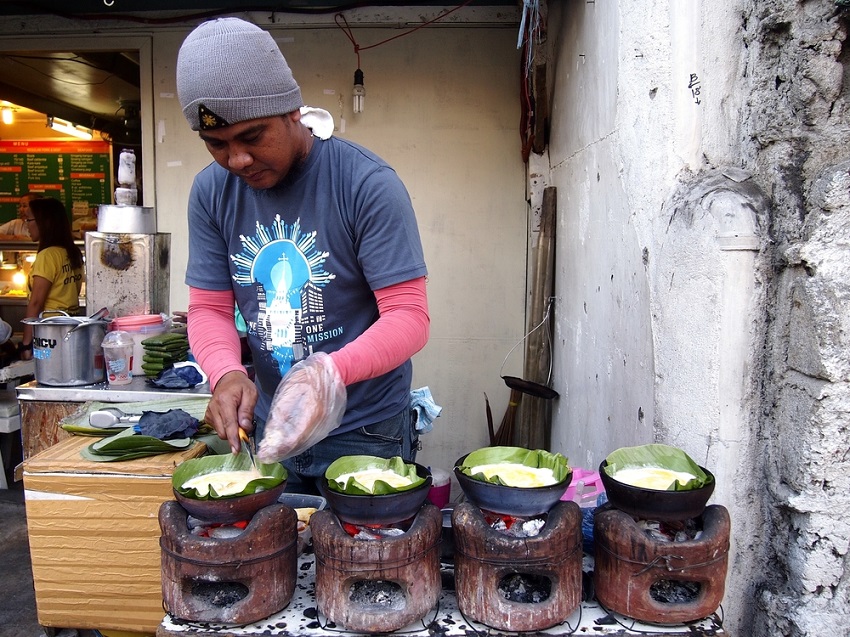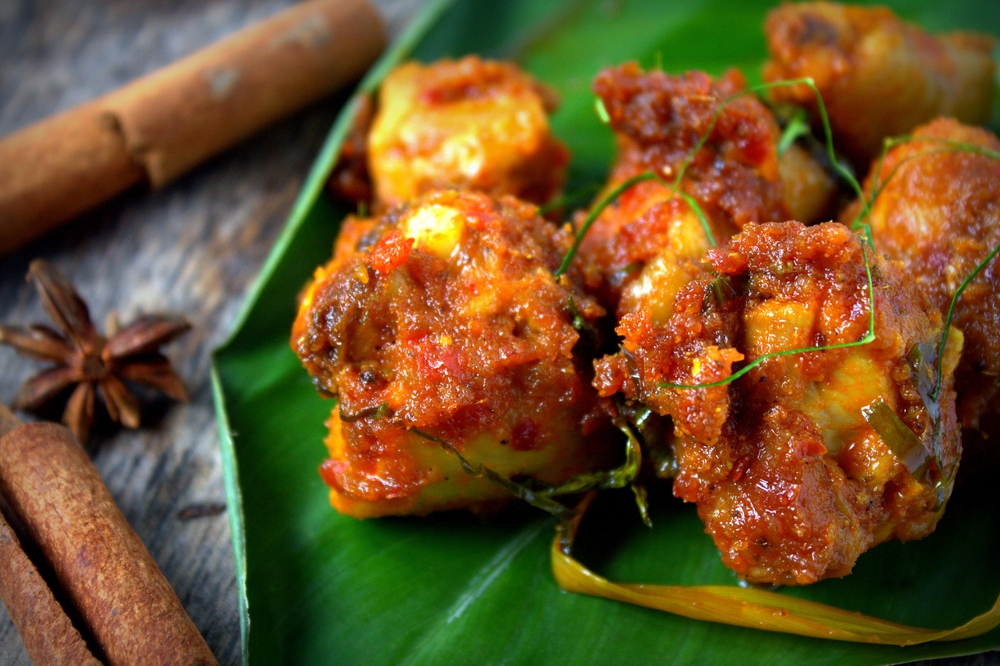Philippines - food
The Philippines’ food culture is distinctively different from other countries in this region. Their assimilation into the Western cultures, being one the most Christian countries and being able to speak English very well due to Spanish rule during 16th-19th century and American Rule during the late 19th – early 20th century. Therefore, it gave the Philippines so much influence on Western food. Mechado, Longganisa, Valencia fried rice, breads, cakes, Gravy sauce, food fried with garlics adding onions and tomatoes are all Spanish inspired (นันทนา ปรมานุศิษฏ์, 2556:79). Arroz Caldo or rice congee is Chinese food but rather adopts a Spanish name because most costumers were Spanish. Chinese food started to extend into the Philippines in the 11th century when Chinese travelled here for trades. Today Chinese food such as steamed dumplings, Chinese buns, Xioami and Mami or noodles with soup is seen everywhere (วิทย์ บัณฑิตกุล, 2555:134).
Rice is the main ingredient cooked as food or deserts in this country. The Filipinos do not only consume rice as food, but, at weddings, it is also a symbol of the well-off for leading a couple’s life. At Bukidnon wedding, when a groom receives a rice ball from their parents and gives it to a bride, the wedding is complete. For Batak people in Palawan, seniors and the wedding couples exchange rice balls to express relationship bonds in their community (ฝ่ายวิชาการ สถาพรบุคส์, 2558:206).
According to the Philippines’ topography and varied variedly ethnical groups, rice is the main ingredient; however, local ingredients and environments in each area make a great difference in the menu. For example, Northern Luzon Island bordered by coast and mountain houses the Ilocanos, the Pagasinan and some other ethnic groups. These people favor eating local ingredients found in their homes such as White Jute, steamed and boiled vegetables, boiled pork, boiled fish, marine shrimp paste, red ant eggs and smallscale mud carp. While Central Plain of Luzon on which Manila is laid fosters major rice plantations. The Tagalog and Pampangan people, the predominantly ethnic groups living there, favor consuming Western-influenced food such as sausages and stuffed meatloaf rolls. In South Tagalog, where it grows rice, coconuts and other fruits, people there favor consuming local food such as freshwater fish, sour food cooked with vinegar, sour fruits and snacks from rice and coconuts (นันทนา ปรมานุศิษฏ์, 2556:76).
In Mindanao, most populations are Muslim, so pork is prohibited. It is different from other parts of the Philippines where pork is largely consumed. On the other hand, Vinsayas is filled with fresh and dried seafood. Most populations are Christian mainly favoring fish such as vinegar-boiled fish called Pinamarhan and Kinilaw, fish salad cooked with vinegar, onions, tomatoes and unripe mangos.
The Filipinos prefer food cooked with vinegar. Sour taste derives from lemon, star apple, madan, tamarind, baby tamarind leaves, tomato and various kinds of vinegar such as coconut vinegar, sugar cane vinegar and rice vinegar. Popular menus like Adobo, Kangkong Salad, Mechado, Sinigang na Baboy and Kare-Kare are all cooked with the sour ingredients (นันทนา ปรมานุศิษฏ์, 2556:77).
Adobo is the most popular and favorite menu of the Filipinos. Though its name is identical to Adobo of Spain, it is genuinely local food. When the Spanish arrived at the Philippines, they thought this food was similar to Adobo, their Spanish food. So, they called it Adobo. The main ingredients are meat such as pork, lamb, goatmeat, shrimp, squid or chicken boiled with vinegar, soy sauce, rice bran oil, onions, garlic, bay leaves, white pepper and ginger. It is believed adding vinegar would help preserve food since vinegar has a property of killing bacteria so that food is not going to rot so easily (รายการโฮมรูม, 2557). This food has been very popular up to now even though younger generation seems more interested in fast food in which its taste and presentation is more attractive.
Jolliebee of the Filipinos
Fast food chain is a profitable business distributing a great number of incomes to its Filipino owner. It is an overriding impression for tourists believing they are not reaching the Philippines unless they are not trying this one restaurant, Jolliebee whose main dish is burger.
Jolliebee was founded in 1975 by a Chinese-Filipino Tony Tan Caktiong. Now he is a chairman of Jolliebee Foods Corporation and the 5th richest Filipino. The chain boasts popularity over 40 years signifying product qualities as well as customer loyalty. Though many of famous American fast food chains are expanding endlessly, Jollibee is proved to be more popular (ศูนย์วิจัยเศรษฐกิจและธุรกิจ ธนาคารไทยพาณิชย์ (EIC), 2557).
Tony Tan stated “Jolliebee’s strength is realizing the culture and knowing what the Filipinos favor. They prefer sweetened food and have a manner of smelling food before eating.” Jolliebee, thus, cook basic fast food ingredients with spices giving strong flavors in order that the food is answering to what the Filipinos are looking for (ประชาชาติธุรกิจออนไลน์, 2559).
Besides popular fast food menu, the Filipinos also take interest in food for health. The Western fast food is high-fat and unhealthy. Therefore, food cooked from local ingredients such as fish and many kinds of vegetables are useful alternatives for low-fat and high-fiber food. It is undoubtedly popular among singers, actors and healthy food lovers. Anyhow, consuming various kinds of menus leaves a feeling that healthy food is boring and tasteless. Pakbet, for instance, is vegetarian food cooked with onions, tomatoes, eggplants and Roselle helping reduce heart disease and blood-vessel related risks. It is healthy and edible for everyone (Ryan Devon, 2015).





